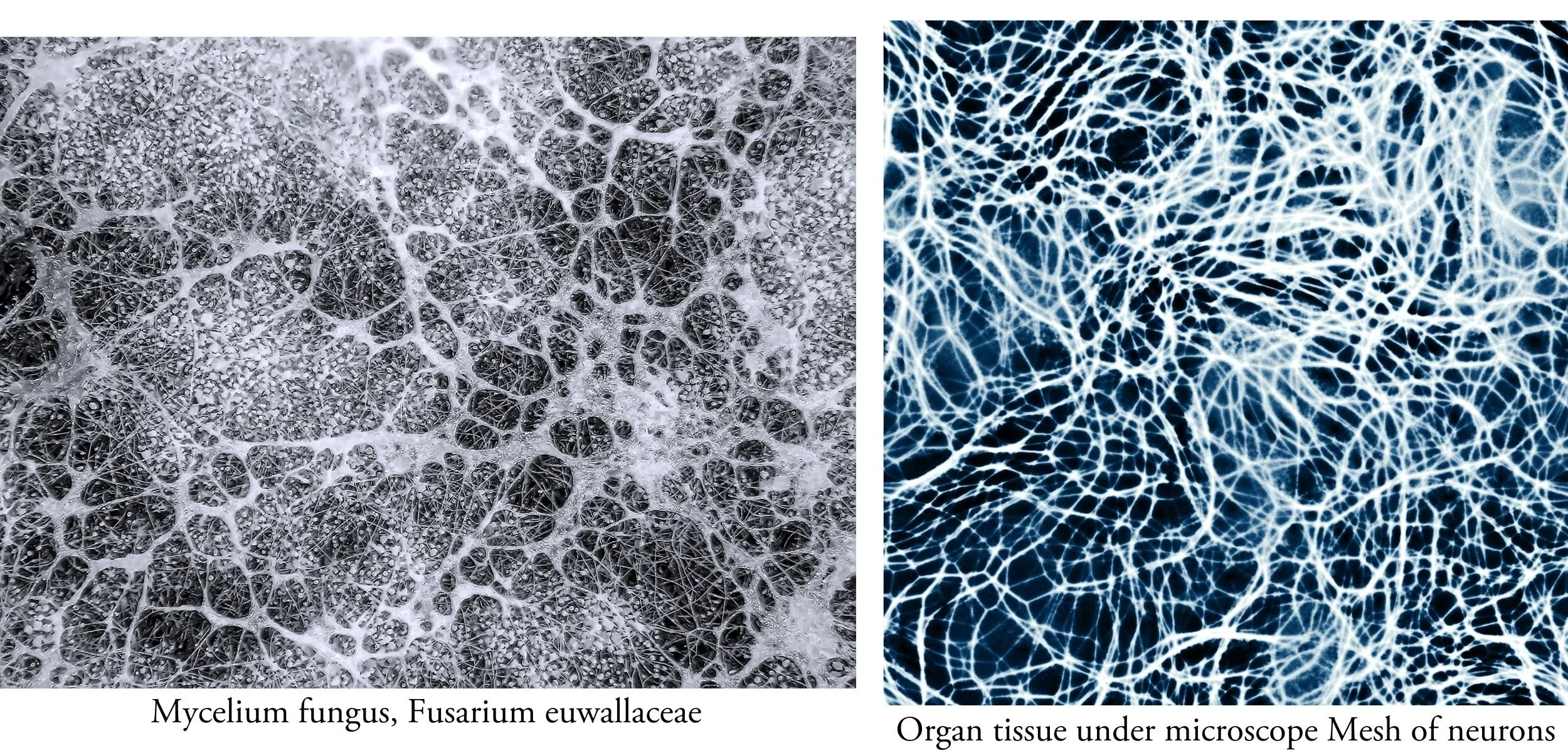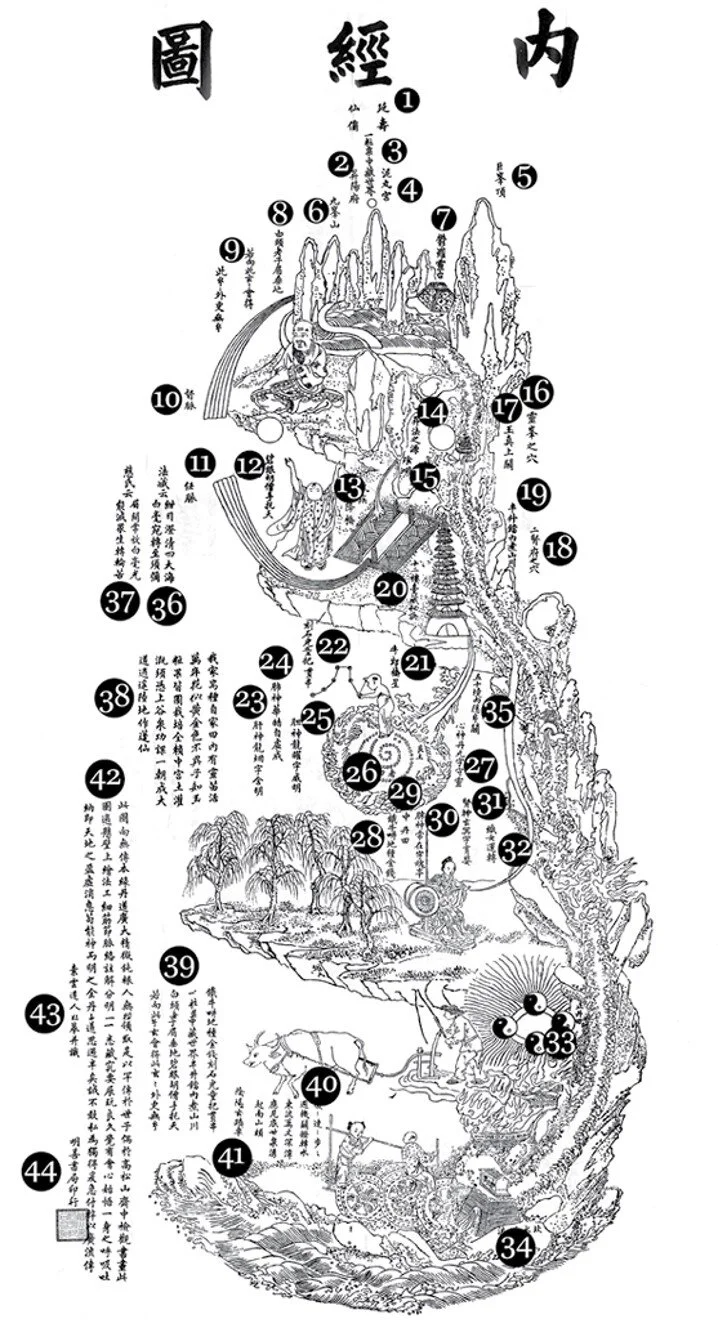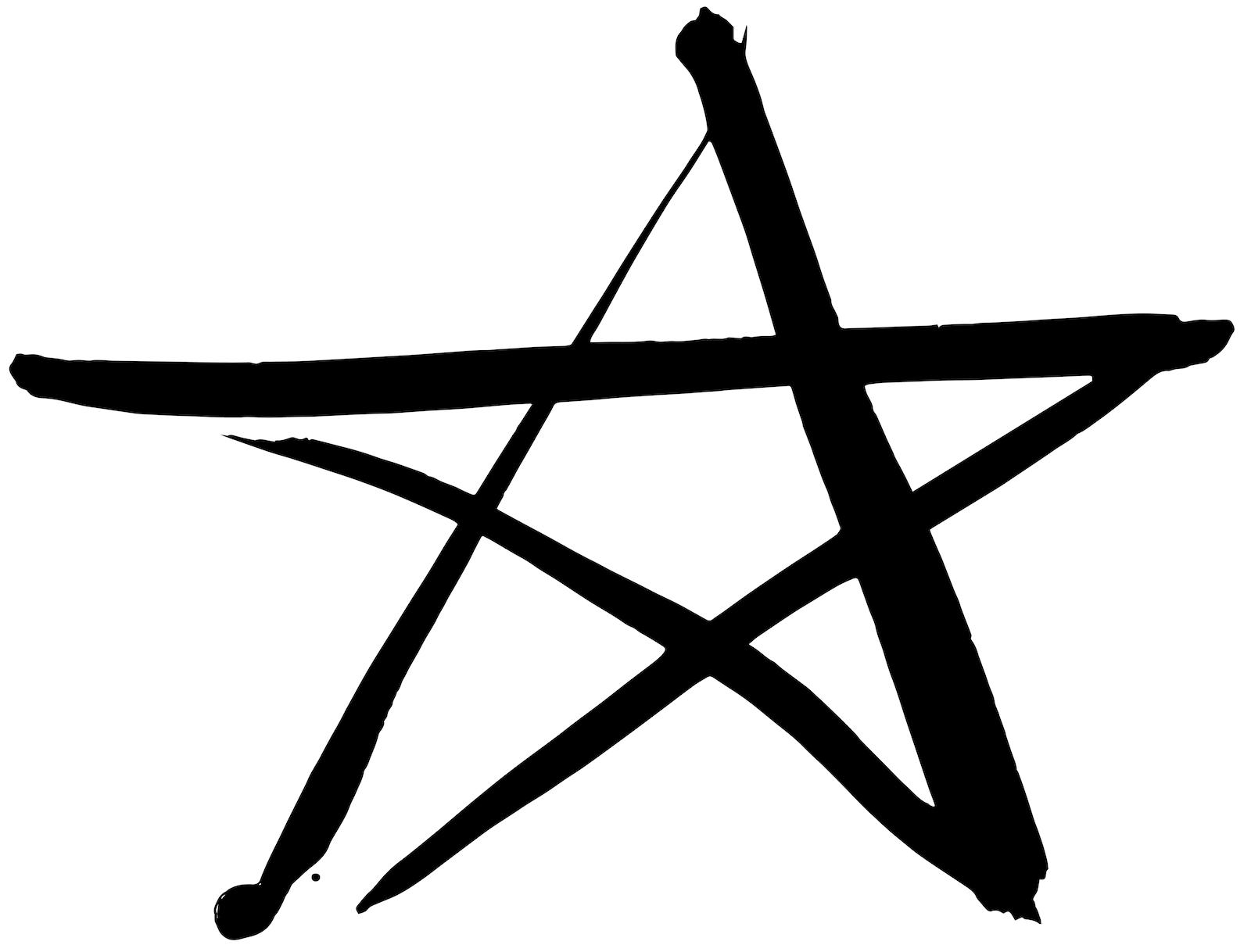
Classical Chinese Medicine
Classical Chinese Medicine views each of us as an extension of the natural world around us
Similarly to the environment, we too can suffer from too much heat which can agitate the mind and body and lead to issues like insomnia and anxiety, or not enough heat which can show up as lethargy, weak digestion and the loss of drive. Our bodies prefer to live in a homeostatic balance, and Acupuncture and Chinese Medicine can help to restore that balance. As we restore balance to the body, and the microcosm within, it allows us to radiate wellness into our everyday lives, allowing for an even more harmonious outer life.
Within each of us is a universe…
“Man is a microcosm, or a little world, because he is an extract from all the stars and planets of the whole firmament, from the earth and the elements; and so he is their quintessence.” ~Paracelsus
The pictures above depict a zoomed in image of the mycelium network on the left and a bundle of neurons on the right. In the same way that the mycelium network allows individual plants within the ecosystem to communicate with each other, we too have neurons and connective tissue which allow various parts of our body to communicate with itself. Acupuncture works upon stimulating the fascia and neuro-endocrine-immune systems to help the body communicate within itself more effectively.
How does Classical Chinese medicine differ from TCM?
Classical Chinese Medicine is based off of the Classical texts which include The Ling Shu, Su Wen, Nan Jing, and Shang Han Lun, just to name a few. These ancient texts are the roadmaps of Classical Chinese Medicine. During my studies, I have had the honor of studying under Jeffery Yuen, an 88th Generation Daoist Priest who has helped to preserve the essence of Classical Chinese Medicine within the context of his teachings and translations of Classical Texts.
Dr. Heiner Fruehauf, has described the difference between Classical Chinese Medicine versus TCM as such:
While TCM represents the recent marriage between local Chinese resources with the methodology of scientific materialism, Classical Chinese Medicine (CCM) remains firmly committed to its ancient roots. CCM is a science in its own right, embedded in the mytho-poetic mode of observing and describing nature, which linked the spheres of macro- and microcosm in ancient China and became preserved in a set of works honored as “the classics.” The primary distinguishing feature of CCM is thus its way of thinking—why and when and how does one chose to apply a therapeutic modality, rather than insisting that the use of acupuncture and herbs alone defines a practitioner of the traditional art of Chinese medicine. CCM does not advocate a blind adherence to things past, but embraces the classical spirit of utilizing time-honored modes of holistic thought in an ever changing space-time environment.
excerpt taken by Dr. Heiner Fruehauf Founding Professor of the College of Classical Chinese Medicine at NUNM, https://classicalchinesemedicine.org/a/ccm/
Classical Chinese Medicine is the foundation from which TCM Medicine emerged. CCM acknowledges and contains 5 different meridian systems to honor the various depths of the body. These channel systems include the sinew vessels, the divergent channels, the primary meridians, the luo vessels, and the eight extraordinary vessels. The five channel systems within Classical Chinese medicine allows the practitioner to tap into and address pathology at the deeper levels of the genetic/epigenetic/ancestral levels rather than relying solely upon the primary meridian system utilized within the TCM model.
Classical Chinese Medicine views us as an extension of nature. Our body is a microcosm of the natural world. The picture above is named Nei Jing Tu which means, Chart of the Inner Landscape. This picture uses symbolic imagery to depict the environment that resides within each of us.
The Daoist Body image is separated into three sections, also known as the three dan tians or caverns:
Upper cavern: At the top of the picture are two bridges, which during the microcosmic orbit meditation, the tongue is placed at the roof of the mouth to help bridge the Ren (Conception) and Du (Governing) vessels and create a single current of energy for the Qi to travel through the midline of the front and back of the body, as one continuous circuit. The microcosmic orbit meditation is used to strengthen us from within by creating more energy flow through the Central Nervous System, and all that it innervates. The circles in the head represent the eyes, where the left eye is represented by the sun and the right eye is represented by the moon.
Middle cavern: The middle section of the body shows a swirl with the big dipper constellation above it; this represents the heart. The Daoist’s believed the North Star, similarly to our heart, helps guide us in our life. The image of the Oxen puling the cart represents the earth element, more specifically the spleen/stomach functioning, which is the basis of our digestion. Our earth element utilizes our digestive power to produce blood and Qi to nourish the body, from the food and drink we ingest.
Lower cavern: The girl and boy at the bottom represent our primal yin and yang essences which is held within the left and right kidneys. In Chinese Medicine, the basis of life, our genetics are and our primal life source, or essence, is stored within the kidneys. The kidneys are part of the water element and the children playing in the water at the bottom of the picture represent the interplay of our primal yin and yang energies.
This nature-based way of looking at the person in relation to the natural world is the foundation of Classical Chinese Medicine.
What are the Eight Extraordinary Vessels?
The eight extraordinary vessels are one of the five channel systems of Classical Chinese Medicine, they are our gateway to our own personal evolution, and also the evolution of humanity. These vessels can be tapped into by utilizing specific needling techniques upon these meridians, meditation and visualization techniques, stone medicine and herbs that are specific for unlocking the wisdom of these channels. Working with the Extraordinary vessels allows one to tap into and address deep seeded ancestral trauma, genetic disorders, and from a cultivation standpoint, these vessels can be used to help us awaken our true nature in the deepest sense. The eight extraordinary vessels were historically used by Daoist Alchemists to tap into the seed of endless potential within each of us.
As Jeffery Yuen describes, “The eight Extraordinary Vessels reflect the evolutionary/transformational dynamics pertaining to humanity, ethnicity and gender. They are the ‘roadmaps’ of physiology, pathology and evolution. They are responsible for both natural and moral adaptations to the world…
Cultivation of the eight Extraordinary vessels vessels is the deepest form of self-exploration; in the process of doing so you come closer to full self-acceptance and begin to understand your life’s purpose.”



